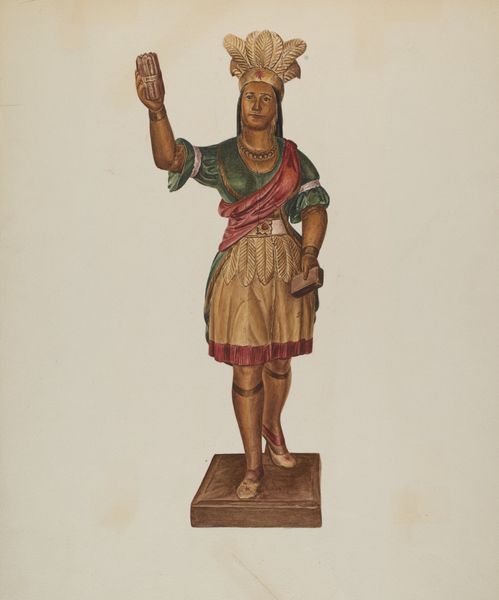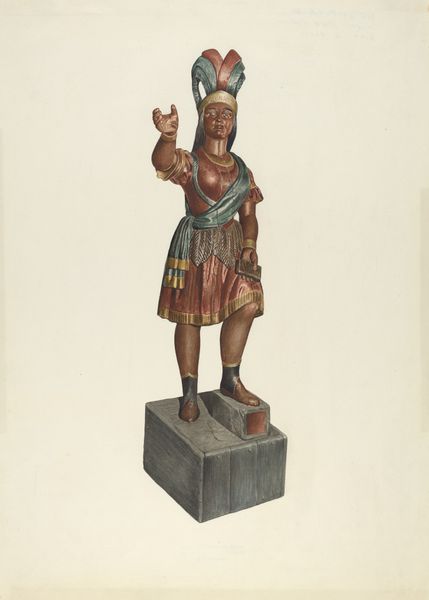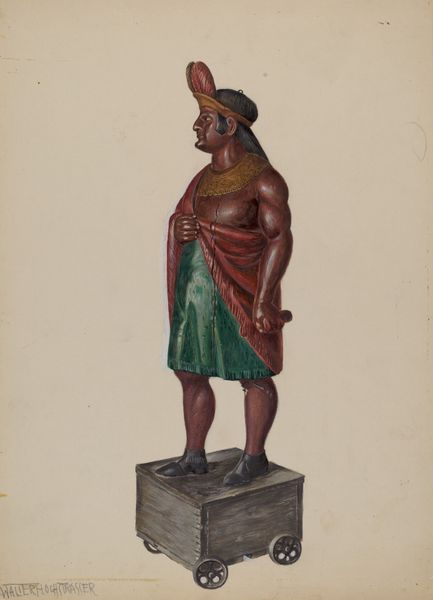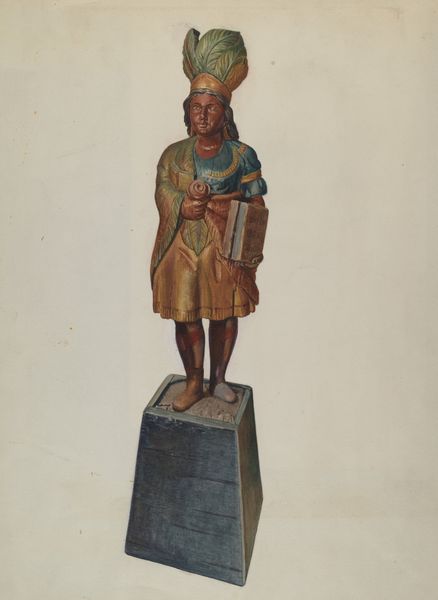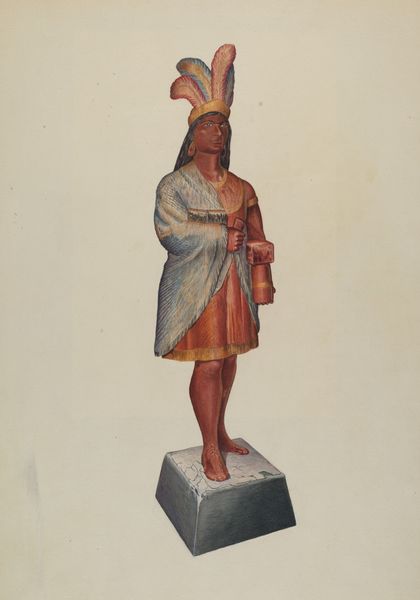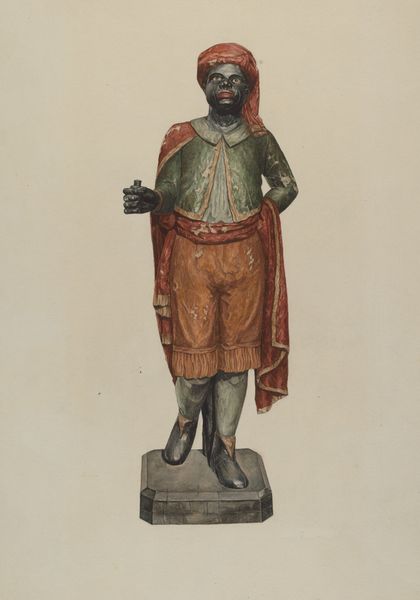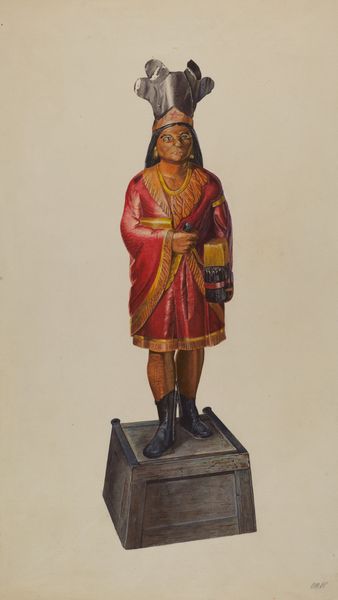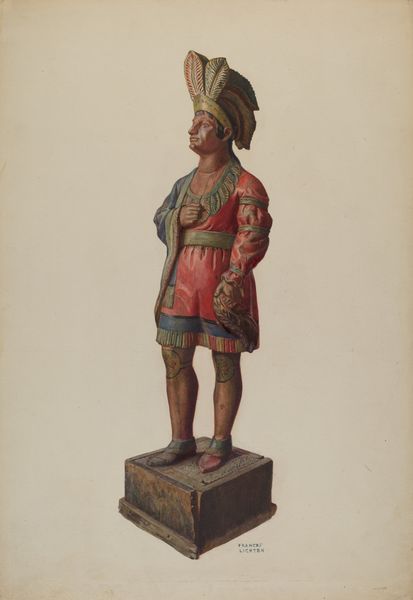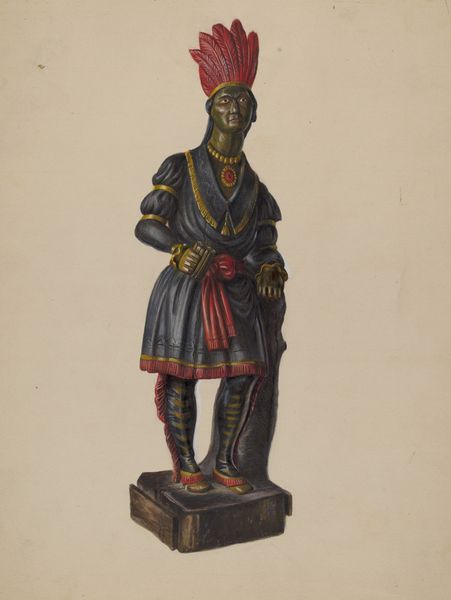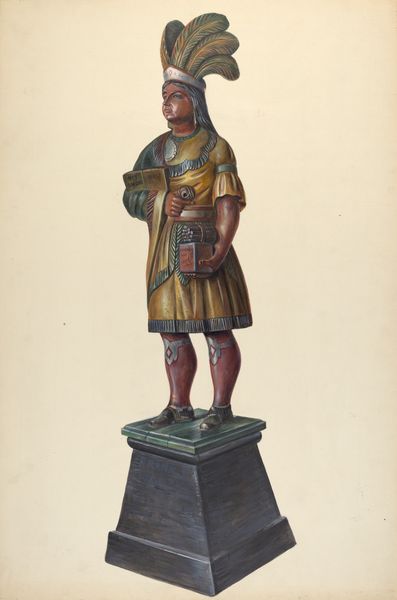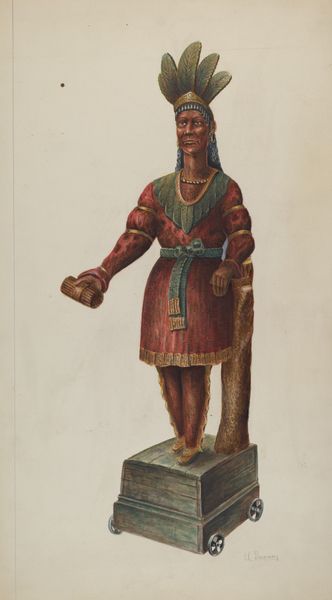
drawing, coloured-pencil, watercolor, sculpture
#
portrait
#
drawing
#
coloured-pencil
#
caricature
#
figuration
#
watercolor
#
coloured pencil
#
sculpture
#
watercolor
Dimensions: overall: 54.3 x 36.9 cm (21 3/8 x 14 1/2 in.)
Copyright: National Gallery of Art: CC0 1.0
Curator: Well, here we have "Cigar Store Indian," rendered around 1938 by Ralph M. Lewis. At first glance, it seems to be a watercolor and colored pencil drawing—or perhaps it depicts an actual sculpture. Editor: The mood is… ambivalent. There’s something quite mournful in the gaze. It's interesting how a sculpture of an indigenous person has now been twice-removed by this image of that object. What does it mean to represent something that's already a representation? Curator: Exactly! You’re hitting on the heart of it. It speaks volumes about appropriation, right? Cigar store Indians became ubiquitous in front of tobacco shops, these silent figures meant to beckon customers—mostly white customers. Editor: And perpetuate stereotypes. The feathered headdress, the stoic expression – it all plays into a constructed narrative. I’m immediately thinking about Laura Mulvey's concept of the male gaze and how it influences art; you can see this in how the figure’s presentation reduces indigenous identity into a commodity. Curator: The drawing, with its sensitive lines and muted colors, somehow imbues the figure with a kind of humanity that the original wooden sculptures often lacked, though. It’s almost a sympathetic caricature. Or maybe a form of redemption? A second chance at personhood. Editor: I appreciate your interpretation, but that redemption feels complex, perhaps even unintentionally insidious. By softening the image, doesn’t it risk further romanticizing a problematic history? Are we simply aestheticizing cultural exploitation? Curator: Ouch! That’s a harsh, but fair, read, I guess. I am mostly stuck on the artist. Why this subject, at this time? Was it a commentary, or simply an act of documentation? Is it beautiful because of its technical skill, or offensive because of what it portrays? These tensions fascinate me. Editor: The image certainly forces us to confront uncomfortable questions. This simple artwork exposes such complex power dynamics, the commodification, and the gaze, and how history persists in shaping present perceptions. Curator: You’ve given me plenty to ponder. And in reconsidering the purpose and intent of the cigar store Indian in general and Ralph's colored interpretation, I realize these visual artifacts are never merely benign relics of the past. They are potent agents capable of shaping ideas, and perceptions in an ever-shifting present.
Comments
No comments
Be the first to comment and join the conversation on the ultimate creative platform.
